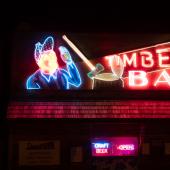Wild West Words: Stagecoach, Chuckwagon, Moccasin

STAGECOACH
The stagecoach is a beloved icon of the American West. Cinematic and literary portrayals of the stagecoach have often painted images of a handsome passenger carriage drawn by six thundering horses. Atop sits the wagoneer and his shotgun rider, while below intense human dramas play out between the passengers who dare to dream of safe passage to California on the stagecoach.
Such scenarios were loosely inspired by events in the American West between the years 1859 and 1869, when stagecoaches crisscrossed the wilderness between St. Louis and San Francisco, carrying mail, cargo, and passengers. Throughout the 1860s, the Montana mining settlements of Virginia City and Helena were serviced by a Wells Fargo stage originating in Salt Lake City.
The stagecoach era in the American West lasted less than two decades, but it will live forever in literature and cinema. We less often think of the stage as an important mode of European transportation.
As early as 1640, stagecoaches were transporting passengers across the city of London, and eventually to Cambridge, Liverpool, and Edinburgh. Rolling at an average speed of five miles per hour and stopping at way stations en route, the journeys were accomplished in “stages,” hence stage coach, a term attested in English documents by 1658. The term and the technology followed immigrants to the New World, where stagecoaches provided public transport up and down the East Coast, and ultimately westward across the frontier to San Francisco.

CHUCKWAGON
While a cowboy worked a long day trailing cattle, it was the camp cook’s job to prepare victuals for the crew’s supper. At day’s end, the cowboy’s universe telescoped down to the chuck wagon. It was his “home, bed and board…hospital and office…playground and social center,” writes Ramon F. Adams, author of Western Words, A Dictionary of the American West.
These mobile kitchens, vital to the success of such trail drives as Nelson Story’s 1866 Texas-to-Montana drive, were often little more than farm wagons equipped with a ‘chuck box’ and cooking utensils. The word chuck that referred to the camp cook’s offerings comes from chuck or chock, meaning, originally, “block of wood.” From there, chuck acquired the notion of a “block” of bread, cheese or meat. In cowboy parlance, chuck was daily sustenance served up at the all-important chuck wagon.

MOCCASIN
English explorer John Smith was among the first Europeans to describe and chronicle the East Coast Algonquian people. In his 1610 publication Map of Virginia, Smith included a glossary of basic Algonquian terms and their English translations. One of these was “Mockasins, Shooes.”
Later writers variously spelled the term makkusin, moggizon and mowkisin as English speakers struggled to orthographically represent this Native word.
Moving westward across the North American continent, explorers and immigrants took the Algonquian word moccasin with them. English speakers applied moccasin to the footwear of every Native group they encountered, whether or not the term fit. American writer James Fenimore Cooper was responsible for standardizing the modern spelling of the word in his 1826 novel Last of the Mohicans.
Moccasin is one of a handful of Native American words now found in every household English dictionary.












Leave a Comment Here